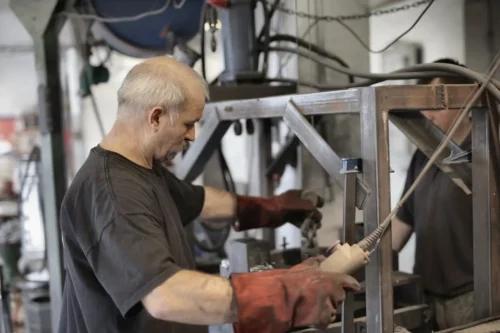Introduction to Predictive Maintenance AI
In this blog, you will learn about Predictive Maintenance AI, a technology that uses data to predict when machinery and equipment might need maintenance. It helps prevent unexpected breakdowns by identifying issues before they happen. Predictive Maintenance AI can save businesses time and money by reducing unplanned downtime and improving overall efficiency.

Benefits of Implementing Predictive Maintenance AI
Companies that implement predictive maintenance AI often experience fewer unexpected breakdowns and reduce maintenance costs. By using AI algorithms, machines can indicate when they need servicing, preventing costly downtime. Additionally, predictive maintenance AI can help optimize maintenance schedules, ensuring machinery operates efficiently for longer periods. These benefits ultimately contribute to increased productivity and improved equipment lifespan.
Predictive maintenance AI can enhance machinery performance by predicting when equipment might fail, allowing you to fix issues before they cause a breakdown. This technology monitors the health of machinery in real-time, identifying potential problems early on. It helps you schedule maintenance when needed, reducing downtime and preventing costly breakdowns. With predictive maintenance AI, you can improve machinery efficiency and extend its operational lifespan.
Cost-Effectiveness of Predictive Maintenance AI
Advanced manufacturing technologies can help reduce reworks by improving precision and efficiency in the production process. These technologies can identify errors early on, allowing for quick adjustments to be made before products are completed. Additionally, automated systems can streamline production workflows, minimizing human errors that often lead to reworks. By integrating advanced manufacturing technologies into operations, companies can enhance productivity while decreasing the need for costly rework processes.
Real-life case studies show how predictive maintenance AI has significantly improved machinery and equipment lifecycles. A manufacturing company reduced downtime by 30%, saving $1.5 million in maintenance costs. In another instance, a transportation company increased the lifespan of their vehicles by 20%, resulting in a 15% rise in overall efficiency. These examples highlight the tangible benefits of implementing predictive maintenance AI in various industries.
Challenges and Solutions in Adopting Predictive Maintenance AI
Adopting predictive maintenance AI may pose challenges initially, such as the high cost of implementation and limited expertise in handling AI technology. However, these challenges can be overcome with proper training for staff and seeking support from AI experts. It is crucial to ensure that the AI tool is compatible with existing machinery and equipment to maximize its effectiveness. Regular monitoring and evaluation of the AI system’s performance can help detect and address any issues promptly. Prioritizing data security and privacy measures is essential to protect sensitive information and maintain the integrity of the predictive maintenance process.
Future Trends in Predictive Maintenance AI Development
Predictive maintenance AI is evolving rapidly. AI algorithms are improving in their ability to predict machinery failures accurately. Increased use of machine learning is refining these predictions to help prevent breakdowns before they happen. Remote monitoring is becoming more popular, allowing for real-time tracking of equipment health. Integration of AI with IoT devices is enhancing data collection capabilities. Predictive maintenance AI is likely to become even more sophisticated in the future, reducing downtime and optimizing equipment performance.







